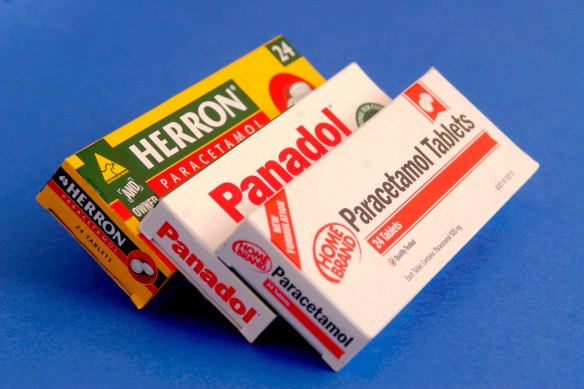Paracetamol medication such as Panadol may be no better than a placebo in most common pain conditions, according to the largest review of the evidence to support its use.
Researchers from the University of Sydney looked at systemic reviews which evaluated the trial data for paracetamol for pain relief in 44 conditions and found that it was only proved to be effective in knee and hip osteoarthritis, craniotomy, tension headache and perineal pain after childbirth.

Paracetamol is one of the most popular pain-relieving medications.Credit: Adam Hollingworth
But for other conditions where paracetamol is commonly used – including migraine, post-operative pain, dental procedures, childhood middle ear infections, back pain, abdominal pain and common cold-related headaches – the evidence to support its use was low quality or inconclusive.
Paracetamol is the most commonly used painkiller in Australia. Sales have increased by 75 per cent since the government rescheduled codeine medication in 2018 to make it available only by prescription, to give it a 60.1 per cent market share of over-the-counter analgesics.
Lead author Christina Abdel Shaheed said it had been known for some time that paracetamol was ineffective for back pain, but the group was surprised that there was strong evidence to show that it worked in only four conditions. In osteoarthritic conditions, the effect was so small that it was questionable whether it had a clinical benefit.
“We want people to have timely access to sound treatment and if we know something is not going to work, it’s important for the public to know that so they’re not wasting their time with ineffective treatment, and with back pain we know that’s the case,” Dr Abdel Shaheed said.
“Health guidelines still recommend paracetamol for all back pain, so it’s probably a good time for guideline developers to reconsider that.
“But where there’s uncertainty, we recommend that people still use paracetamol as an analgesic option. It’s still recommended by the World Health Organisation as first-line treatment for moderate pain conditions.”
The review concluded that large, high-quality trials should be conducted to reduce uncertainty regarding the efficacy of paracetamol for common pain conditions. It did not consider the efficacy of paracetamol in reducing fever, which will be the basis of a second study that is under way.
Chris Maher, who participated in the research, said it was important to find out one way or the other if paracetamol was effective because prescribing it unnecessarily increased the risk of paracetamol poisoning in the community.
He was part of the team that debunked the effectiveness of paracetamol for back pain in the Lancet medical journal in 2014, an article that was refuted by vested interests at the time. He said the new study was likely to be equally controversial.
“We’re saying to people that opioids are harmful so you need to think of something less harmful, so they’re heading back to paracetamol and we don’t know if it works or not,” Professor Maher said. “That’s a problem.”